Anger is a natural emotion that everyone experiences from time to time, including children. However, children may struggle with understanding and managing their anger effectively, leading to outbursts, aggression, and difficulties in social interactions. To help children develop healthy coping mechanisms and emotional regulation skills, anger management activities specifically designed for kids can be highly beneficial.
Anger management activities aim to provide children with practical tools and strategies to recognize and control their anger in a positive and constructive manner. These activities not only assist children in managing their emotions but also help them develop empathy, communication skills, and self-awareness.
The importance of anger management for kids cannot be overstated. Uncontrolled anger can negatively impact a child’s overall well-being, academic performance, and relationships with peers and family members. By introducing anger management activities early on, parents, educators, and caregivers can equip children with valuable skills that will benefit them throughout their lives.
Nurturing Understanding with Parental Involvement. Embark on a journey to teach kids about emotions, fostering empathy and self-awareness from an early age.
In this article, we will explore a variety of effective anger management activities suitable for kids of different ages. These activities can be implemented both at home and in educational settings, providing children with opportunities to learn and practice anger management techniques in a supportive environment.
Whether it’s through art, games, role-playing, or relaxation exercises, each activity aims to empower children to better understand their emotions and respond to anger in a healthy and constructive manner.
Table of contents
- Understanding Anger in Kids
- Activity 1: Anger Art Therapy
- Activity 2: Breathing Exercises and Mindfulness
- Activity 3: Role-Play and Drama
- Activity 4: Physical Exercise and Sports
- Activity 5: Games and Puzzles
- Activity 6: Journaling and Writing Prompts
- Activity 7: Calming Sensory Activities
- Conclusion
- Frequently Asked Questions
Understanding Anger in Kids
Anger is a natural emotion experienced by individuals of all ages, including children. As parents, caregivers, or educators, it is crucial to understand the underlying causes and signs of anger in kids.
By gaining insight into these triggers and recognizing the signs, we can better support children in managing their anger and promoting emotional well-being. In this blog, we will explore some common triggers and signs of anger in children, providing valuable information for anyone involved in a child’s life.

Common Triggers of Anger
a. Frustration: Children may become angry when they encounter challenges or obstacles they find difficult to overcome. For example, struggling with a complicated task, a toy that won’t work, or not being able to express themselves effectively can lead to frustration and subsequent anger.
b. Fatigue or hunger: Lack of proper rest or hunger can significantly impact a child’s mood, making them more prone to frustration and anger.
c. Lack of control: Children have limited control over their lives, which can lead to feelings of helplessness. When they are not given choices or when their opinions are disregarded, it can trigger anger.
d. Unmet needs: Children may become angry when their basic needs, such as attention, love, or affection, are not adequately met. Feeling neglected or ignored can evoke strong emotions.
e. Transitions and changes: Younger children often find it challenging to adapt to new routines or changes in their environment, such as moving to a new house or starting a new school. These transitions can provoke anger due to the uncertainty and discomfort they bring.
Cultivating a Positive Atmosphere: Strategies for Encouraging Good Behavior and Character Development in Children.
Signs of Anger in Children
a. Verbal cues: Children may express their anger through shouting, screaming, or using aggressive language.
b. Physical cues: Uncontrolled physical actions like hitting, kicking, or throwing objects may indicate anger in children.
c. Withdrawal or silence: Some children may retreat and become silent when they are angry, avoiding interaction with others.
d. Facial expressions: A child’s face can reveal signs of anger, such as clenched fists, furrowed eyebrows, or a tense jaw.
e. Changes in behavior: Anger may manifest in disruptive or defiant behaviors, such as refusal to comply with instructions, defiance, or defiance toward authority figures.
Activity 1: Anger Art Therapy
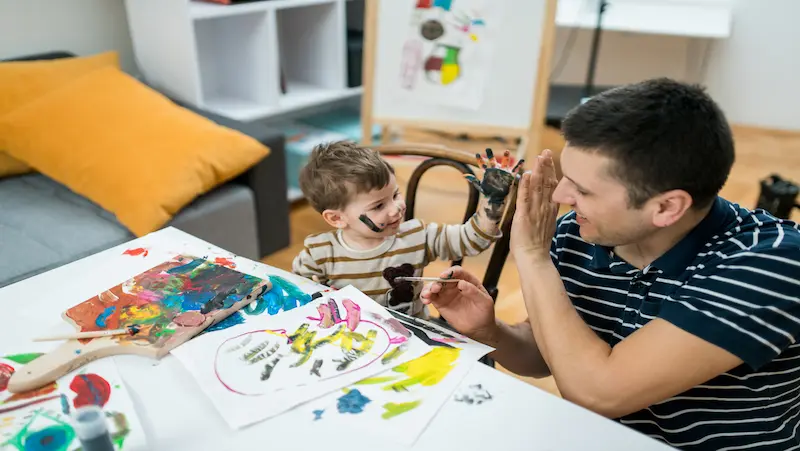
Exploring Art as a Therapeutic Outlet for Anger
Art has long been recognized as a powerful medium for self-expression and emotional release. When it comes to anger, creating art can serve as a safe and non-destructive outlet for venting and processing intense emotions. Through art, individuals can externalize their anger, giving it a tangible form outside of themselves. The act of creating artwork provides a space for introspection and self-reflection, allowing individuals to gain insights into the underlying causes of their anger.
Step-by-Step Guide to Creating Anger-Themed Artwork
Set up a Safe and Comfortable Space:
Prepare a quiet and comfortable space where you can focus on your artwork without distractions. Gather the necessary art supplies such as paper, canvas, paints, brushes, markers, or any other medium you prefer.
Identify and Reflect on Anger Triggers:
Before you begin, take a moment to reflect on the situations, people, or events that trigger your anger. Consider how these triggers make you feel and how your body responds to anger. This self-awareness will help guide your artistic expression.
Choose Your Artistic Medium:
Select the artistic medium that resonates with you the most. It could be painting, drawing, collage, sculpture, or any other form of art that allows you to express yourself freely.
Let the Emotions Flow:
Start creating your artwork, allowing your emotions to guide your artistic process. Don’t focus on creating something aesthetically pleasing; instead, focus on expressing your anger authentically. Use bold, vibrant colors, strong lines, and expressive gestures to convey the intensity of your emotions.
Explore Symbolism and Metaphors:
Consider incorporating symbols or metaphors that represent your anger. This can add depth and meaning to your artwork. For example, you might use jagged lines to depict turmoil or fiery colors to symbolize intense emotions.
Embrace the Process:
Art therapy is not about creating a masterpiece; it’s about the therapeutic journey itself. Allow yourself to let go of expectations and judgment. Embrace the process of creating and let your artwork unfold naturally.
Prioritizing stress management for young students is crucial in equipping them with essential life skills that promote well-being and academic success
The Benefits of Art Therapy in Anger Management:
Emotional Release and Catharsis:
Art therapy provides a safe space for individuals to release pent-up anger, allowing for emotional catharsis. Through the act of creation, individuals can let go of negative emotions and experience a sense of relief and liberation.
Self-Expression and Communication:
Art serves as a visual language that transcends verbal communication. For individuals who struggle to express their anger verbally, art therapy offers a non-verbal means of communication, enabling them to express complex emotions that may otherwise remain unspoken.
Self-Awareness and Insight:
Engaging in art therapy encourages self-reflection and introspection. By externalizing anger through art, individuals gain a deeper understanding of their emotions, triggers, and underlying issues. This increased self-awareness can be instrumental in developing healthier coping mechanisms and managing anger effectively.
Stress Reduction and Relaxation:
Art therapy has a calming and meditative effect, reducing stress and promoting relaxation. Engaging in the creative process can shift focus away from anger-inducing thoughts and redirect energy toward a more positive and productive outlet.
Activity 2: Breathing Exercises and Mindfulness
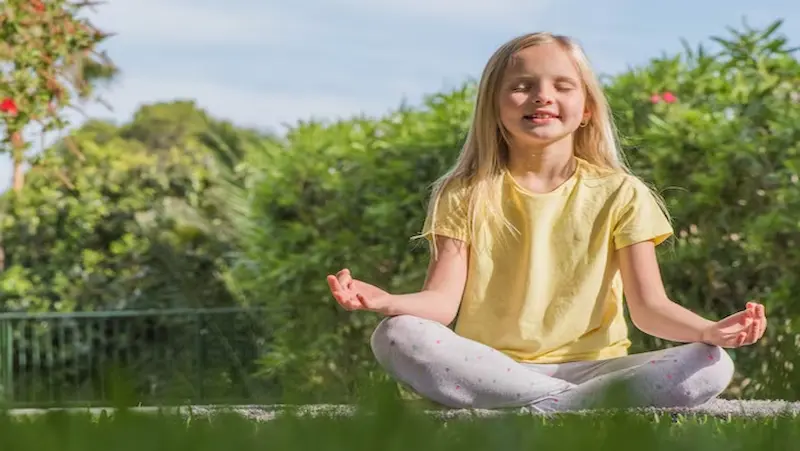
The Power of Breathing Exercises
Breathing exercises provide children with a tangible way to connect with their bodies and regulate their emotions. When kids engage in deep breathing, they activate the body’s relaxation response, which helps to counteract the fight-or-flight response triggered by stress.
Deep breathing slows down the heart rate, lowers blood pressure, and increases oxygen levels in the body, leading to a sense of calmness and improved focus. By incorporating breathing exercises into their daily routine, kids can develop a valuable coping mechanism for managing challenging situations and building resilience.
Teaching Calming Breathing Techniques
Belly Breathing:
Belly breathing, also known as diaphragmatic breathing, is a fundamental technique that helps children focus on deep, slow breaths. Here’s how to teach it:
a. Have the child lie down or sit comfortably with one hand on their chest and the other on their belly.
b. Encourage them to take a deep breath through their nose, feeling their belly rise as they fill their lungs with air.
c. Then, ask them to slowly exhale through their mouth, feeling their belly sink back down.
d. Repeat this process several times, emphasizing the importance of breathing deeply and fully.
Flower and Candle:
This visualization technique combines breathing exercises with imaginative play.
a. Ask the child to imagine they are holding a flower in one hand and a lit candle in the other.
b. Inhale deeply through the nose, pretending to smell the beautiful scent of the flower.
c. Exhale slowly through the mouth, pretending to blow gently on the candle to keep the flame flickering without extinguishing it.
d. Encourage them to repeat this process, focusing on the visualization and the rhythm of their breath.
Counting Breath:
Counting the breath is a simple technique that helps kids concentrate on their breathing while providing a sense of structure.
a. Instruct the child to take a deep breath through the nose and count silently to four.
b. Then, have them exhale slowly through their mouth, counting to four again.
c. Repeat this pattern for several breaths, encouraging them to maintain a steady rhythm and focus on the counting.
Engaging in Mindfulness Activities for Kids,A Journey of Calm and Focus, Offering Benefits of Improved Attention, Emotional Regulation, and Overall Well-being.
Promoting Mindfulness Through Breathing
Apart from using breathing exercises as a tool for relaxation, they can also serve as a gateway to mindfulness. Mindfulness involves being fully present in the current moment and accepting it without judgment. Here’s how to integrate mindfulness into breathing exercises:
Body Scan:
Guide the child through a brief body scan meditation. Starting from the top of their head, ask them to focus on each part of their body, noticing any sensations or tension. Encourage them to take slow breaths and imagine sending relaxation to each body part as they exhale.
Sensory Awareness:
During breathing exercises, prompt the child to pay attention to their senses. Ask them to notice the feeling of the breath entering and leaving their nostrils, the rise and fall of their belly, and any sounds or smells in the environment. By engaging their senses, they can anchor themselves in the present moment and enhance their mindfulness practice.
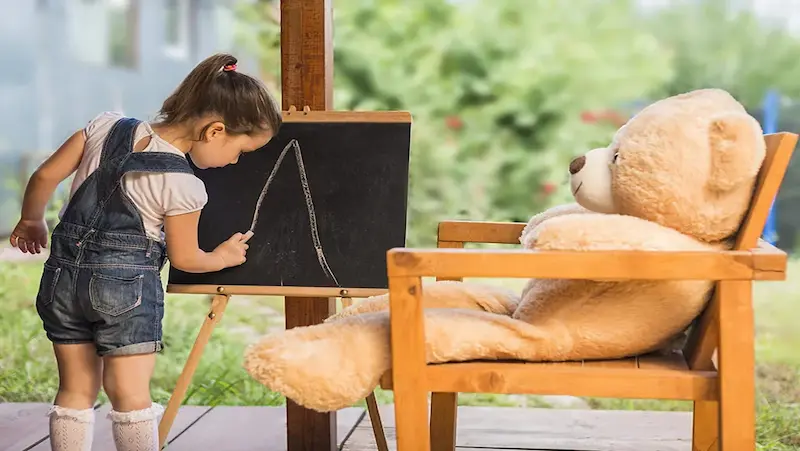
Activity 3: Role-Play and Drama
Anger is a natural emotion that everyone experiences, including children. However, it is crucial to teach children how to express and manage their anger effectively. Role-play and drama are powerful tools that can assist in this process.
By creating scenarios and scripts related to anger, children can explore different situations, learn appropriate responses, and develop crucial emotional and social skills. This blog will delve into the benefits of using role-play and drama to help children express and manage their anger.
The Power of Role-Play:
Role-playing allows children to step into different roles and perspectives, enabling them to understand and empathize with others. It provides a safe environment where they can experiment with various responses to anger-inducing situations. Through role-play, children can enhance their communication, problem-solving, and emotional regulation skills.
Creating Scenarios:
To start the role-play activity, you can create scenarios that trigger anger-related situations. These scenarios should be age-appropriate and relatable to the children’s experiences. For example, you could develop scenarios like a disagreement with a friend, a conflict over sharing toys, or feeling left out during a group activity.
Developing Scripts:
Once you have the scenarios, work with the children to develop scripts for each situation. Encourage them to think about the characters involved, their feelings, and possible actions and reactions. Brainstorm different responses and guide them towards constructive and positive approaches to managing anger. This process helps children develop empathy and consider alternative perspectives.
Practicing Role-Play:
After creating the scripts, allocate roles to the children and let them act out the scenarios. Encourage them to express their emotions authentically while exploring different ways to resolve conflicts. This hands-on approach helps children internalize problem-solving strategies, emotional awareness, and self-control.
Facilitating Reflection and Discussion:
Once the role-play is complete, engage the children in reflection and discussion. Ask open-ended questions to encourage them to share their thoughts, feelings, and experiences during the activity. Discuss alternative approaches and emphasize the importance of empathy, effective communication, and finding peaceful resolutions. This reflection process helps reinforce the lessons learned and promotes critical thinking skills.
Extending the Learning:
To further reinforce the lessons learned through role-play and drama, encourage children to apply these strategies in real-life situations. Remind them that managing anger is an ongoing process and that they have the power to choose positive responses when faced with challenging emotions. Provide opportunities for children to practice their newly acquired skills in various settings, such as at home, in school, or during extracurricular activities.
Activity 4: Physical Exercise and Sports

The Connection Between Physical Activity and Anger Release
Engaging in physical exercise and sports can be highly beneficial for anger management due to several reasons:
Stress Reduction: Exercise stimulates the release of endorphins, often referred to as “feel-good” hormones. These endorphins elevate mood and reduce stress, helping to alleviate anger and frustration.
Energy Release: Physical activity allows us to channel our excess energy in a positive and controlled manner. By engaging in exercise, we can burn off the adrenaline that often accompanies anger, promoting a sense of calmness and relaxation.
Engaging Kids with Fun Activities: A Playful Approach to Reducing Anger and Promoting Physical Fitness, All Wrapped in Joyful Exploration.acter Development in Children
Improved Mental Well-being: Regular exercise has been linked to improved mental health, including reduced symptoms of anxiety and depression. By enhancing overall well-being, exercise can contribute to a more balanced emotional state, making it easier to manage anger.
Fun Outdoor Exercises for Anger Management
Running or Jogging: Lace up your sneakers and head outdoors for a brisk run or jog. The rhythmic movement and the fresh air can help clear your mind, release tension, and provide an opportunity to reflect on the source of your anger.
Hiking: Nature has a way of soothing the soul. Take a hike through a scenic trail or a nearby park. The combination of physical exertion, fresh air, and the beauty of nature can be incredibly calming and offer a perspective shift on your anger.
Boxing or Martial Arts: If you’re looking for a more intense and dynamic way to release anger, consider taking up boxing, kickboxing, or martial arts. These activities provide an opportunity to channel your aggression in a controlled environment while learning self-defense skills and boosting self-confidence.Exploring the Great Outdoors: Unveiling a World of Adventure and Learning Through Outdoor Activities for Kids
Fun Indoor Exercises for Anger Management
Yoga: Yoga combines physical movement, deep breathing, and mindfulness, making it an excellent practice for anger management. The deliberate and controlled movements in yoga help release tension, while the focus on breathing promotes relaxation and emotional balance.
Dance: Put on your favorite music and dance like nobody’s watching! Dancing is not only a fantastic workout but also a great way to release pent-up emotions. Let your body move freely and express your feelings through dance, allowing anger to dissipate in a fun and creative manner.
Jump Rope: Jumping rope is a simple yet effective exercise that can quickly get your heart rate up and release stress. It’s a convenient indoor activity that requires minimal space and equipment, making it an ideal choice for anger management.
Activity 5: Games and Puzzles

The Power of Games and Puzzles for Emotional Regulation
Games and puzzles have long been recognized for their ability to entertain and challenge our minds. However, they can also serve as valuable tools for emotional regulation. By engaging in these activities, individuals can redirect their focus, alleviate stress, and develop essential emotional skills. Here are a few ways games and puzzles contribute to emotional well-being:
Distraction and Stress Relief: Playing games or solving puzzles provides a much-needed break from daily stressors. It allows individuals to shift their attention away from negative emotions and immerse themselves in a more positive and enjoyable experience. This temporary distraction can help reduce anxiety, anger, and frustration.
Cognitive Engagement: Games and puzzles require mental focus and problem-solving skills. By engaging the mind, these activities encourage individuals to think critically, make decisions, and overcome challenges. This cognitive engagement helps individuals regulate their emotions by diverting their attention toward constructive and stimulating tasks.
Emotional Resilience: Games and puzzles often present individuals with setbacks and obstacles. Overcoming these challenges fosters resilience and perseverance, teaching individuals to manage their emotions in the face of adversity. By practicing emotional regulation within the safe context of a game, individuals can transfer these skills to real-life situations.
Anger-Themed Board Games
“Emojito!”: This family-friendly board game uses emoji cards and challenges players to express emotions through facial expressions and gestures. By encouraging players to embody various emotions, including anger, it helps foster empathy and emotional understanding.
“Stop, Relax & Think”: Designed specifically for children, this board game promotes anger management and conflict resolution. It involves role-playing scenarios and teaches children to identify triggers, calm down, and make positive choices when faced with anger-inducing situations.
“Mad Dragon: An Anger Control Card Game”: This card game is suitable for children and adolescents struggling with anger issues. It provides a safe and engaging way to explore anger triggers, coping strategies, and healthy expressions of anger.
Online Resources for Emotional Regulation
Headspace: Known for its mindfulness and meditation resources, Headspace offers various guided exercises and interactive features designed to help individuals manage stress and regulate their emotions effectively.
Calm: With a wide range of guided meditation sessions and calming exercises, Calm helps individuals relax, reduce anxiety, and gain control over their emotional states. It also offers soothing background sounds and sleep stories to promote restful sleep.
The Mood Meter App: Developed by the Yale Center for Emotional Intelligence, this app helps individuals identify and regulate their emotions. It provides a visual representation of emotions and offers strategies to shift from negative to positive emotional states.
Activity 6: Journaling and Writing Prompts

Why Journaling?
Journaling is a powerful tool that allows children to reflect on their thoughts and emotions in a private and non-judgmental way. It provides an outlet for self-expression, helps develop self-awareness, and promotes emotional well-being. Through journaling, kids can gain a deeper understanding of their feelings, process challenging emotions, and find constructive ways to manage their anger.
Anger-Related Journal Prompts and Writing Exercises
What makes me angry?
Encourage your child to create a list of things that trigger their anger. It could be specific situations, actions, or even certain people. This prompt helps them identify the root causes of their anger and recognize patterns.
How does anger feel in my body?
Ask your child to describe the physical sensations they experience when they feel angry. Do they feel hot, tense, or have a racing heart? By paying attention to their bodily reactions, children can learn to recognize anger early on and practice calming techniques.
My anger story.
Invite your child to write a narrative about a recent or memorable anger-inducing event. Encourage them to describe what happened, how they felt, and how they reacted. This exercise helps children process and reflect on their anger in a structured manner.
Alternatives to anger.
Guide your child in brainstorming alternative ways to respond to anger. Ask them to write a list of healthy coping strategies or actions they could take instead of getting angry. This exercise encourages problem-solving and empowers children to make positive choices.
Letter to anger.
Have your child write a letter addressing their anger directly. They can express their feelings, ask questions, or seek understanding. While this letter might not be sent, it allows children to release their emotions and gain a sense of control.
Draw it out.
Sometimes, words alone might not be enough to express anger. Encourage your child to draw or doodle their anger on paper. They can use colors, shapes, and symbols to represent their feelings visually. This creative exercise can be cathartic and offer a different perspective on their emotions.
Encouragement and Support
When introducing journaling and writing prompts to children, it’s essential to create a non-judgmental and supportive environment. Here are a few tips to keep in mind:
Respect privacy: Assure your child that their journal is a private space, and they have the option to share or keep their entries to themselves.
Active listening: If your child chooses to share their journal entries, listen actively without judgment. Show empathy and validate their feelings to encourage open communication.
Model healthy expression: Set an example by expressing and managing your own emotions in a healthy way. Children learn a lot from observing the adults in their lives.
Encourage consistency: Encourage your child to make journaling a regular practice, even when they’re not feeling angry. Consistency helps develop self-reflection habits and emotional awareness.
Activity 7: Calming Sensory Activities
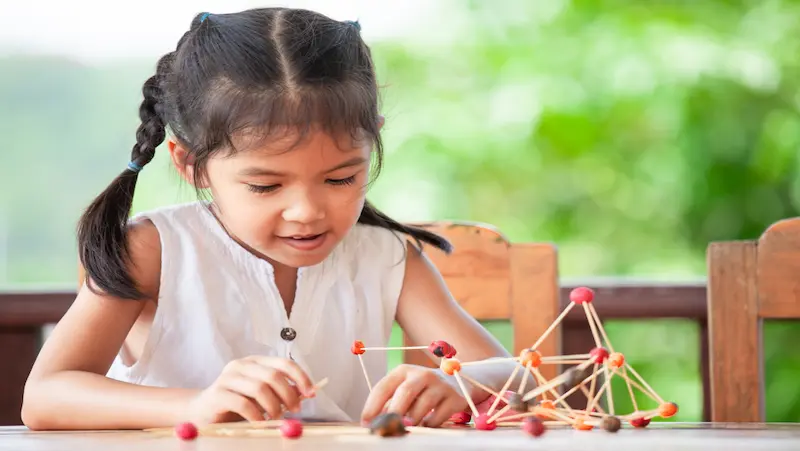
Understanding the Benefits of Sensory Play
Sensory play involves engaging the senses (sight, hearing, touch, smell, and taste) to explore the world around us. When children are angry or upset, sensory activities provide a healthy outlet for their emotions and offer a distraction from negative thoughts. Sensory play has several benefits, including:
a) Emotional Regulation: Sensory activities help children self-soothe and manage their emotions by providing a positive and calming outlet for their energy.
b) Focus and Attention: Engaging the senses helps redirect children’s attention away from anger triggers, allowing them to concentrate on the present moment.
c) Relaxation and Mindfulness: Sensory play encourages mindfulness, helping children relax, reduce stress, and achieve a sense of inner calm.
Sensory Bins:
Sensory bins are fantastic tools for sensory exploration and can be easily customized to address anger management. Here are some ideas to create calming sensory bins:
a) Lavender Rice Bin: Fill a large container with dry rice and add a few drops of lavender essential oil. Encourage children to run their hands through the scented rice, promoting relaxation and soothing their senses.
b) Ocean Discovery Bin: Fill a shallow container with blue-tinted water, and add seashells, small ocean animal toys, and smooth rocks. Children can explore the calming effect of water while engaging their imagination.
Stress Balls:
Stress balls are simple and portable tools that can be used anywhere to manage anger. They provide a tactile experience and help release tension. Consider making your own stress balls using the following materials:
a) Balloon Stress Balls: Fill a balloon with flour or cornstarch and tie it securely. Children can squeeze and manipulate the ball during moments of anger or frustration.
b) Playdough Stress Balls: Create small balls of homemade playdough and place them inside a mesh bag or stocking. Children can squeeze the bag or ball to relieve tension.
Calming Sensory Bottles:
Calming sensory bottles captivate children’s attention and promote relaxation through visual stimulation. Here are two ideas for creating calming sensory bottles:
a) Glitter Bottle: Fill a clear plastic bottle with water, a dash of glitter, and a few drops of food coloring. Secure the lid tightly, and children can shake the bottle gently, mesmerized by the swirling glitter as it slowly settles.
b) Slow-Motion Calm Bottle: Fill a bottle with clear hair gel or clear glue, water, and a few small objects like beads or buttons. Seal the bottle tightly, and children can tilt and turn it, observing the slow movement of the objects, creating a calming effect.
Conclusion
In conclusion, I would like to emphasize the importance of parents and caregivers actively engaging in various activities with their children. By taking the time to explore these activities, parents, and caregivers provide valuable opportunities for learning, growth, and bonding.
Engaging in activities with children promotes their cognitive, emotional, and social development. It stimulates their curiosity, fosters problem-solving skills, and encourages creativity. Whether it’s reading books together, playing educational games, or participating in outdoor adventures, these activities offer a rich learning environment that complements formal education.
It’s understandable that parents and caregivers may have busy schedules and face various challenges, but even small efforts can make a significant difference. Start by setting aside dedicated time for activities, create a consistent routine, and involve the whole family whenever possible. Additionally, don’t be afraid to explore new activities and discover what sparks joy and interest for both you and your child.
So, I encourage all parents and caregivers to take the initiative and embark on this exciting journey of exploration with their children. Embrace the opportunities for growth, learning, and connection that these activities provide. Your involvement will not only shape their present but also lay the foundation for their future success and well-being.
Learn online robotics for kids and robotics class for kids . Also, BrightChamps provides a comprehensive platform for learning about money for kids, offering interactive and engaging resources that teach financial literacy, budgeting, saving, and other essential money management skills.
Frequently Asked Questions
A1: Signs of anger management issues in children may include frequent tantrums, aggressive behavior, difficulty controlling emotions, verbal or physical outbursts, and prolonged anger or irritability.
A2: Anger management activities can provide children with healthy coping strategies, teach them self-control and emotional regulation, improve communication skills, and promote a sense of calm and well-being.
A3: Effective anger management activities for kids include deep breathing exercises, journaling, practicing mindfulness, engaging in physical activities or sports, using art therapy, and learning problem-solving techniques.
A4: Yes, anger management activities can be made enjoyable for kids by incorporating games, creative outlets, role-playing, storytelling, and interactive exercises that engage their imagination and make the process more enjoyable.
A5: You can introduce anger management activities to your child by explaining the purpose and benefits, setting a positive example, creating a safe and supportive environment, and gradually incorporating activities into their daily routine.
A6: Yes, there are age-appropriate anger management activities. For younger children, activities like drawing or using stuffed animals can be helpful, while older children may benefit from journaling, engaging in sports, or practicing mindfulness techniques.
A7 Yes, anger management activities can be seamlessly integrated into everyday routines. For example, deep breathing exercises can be done before bedtime, journaling can be incorporated into a daily reflection time, and physical activities can be part of regular play or exercise.
A8: You can encourage your child to participate in anger management activities by making them enjoyable, providing positive reinforcement and praise, involving them in the decision-making process, and ensuring a supportive and non-judgmental environment.
A9: Yes, using creative outlets for anger management, such as art, music, or writing, can help children express their emotions in a healthy way, reduce stress, improve self-esteem, and promote emotional healing.
A10: Yes, anger management activities can contribute to the development of emotional intelligence in children. By teaching them to recognize and understand their emotions, manage their reactions, and empathize with others, children can enhance their emotional intelligence skills.

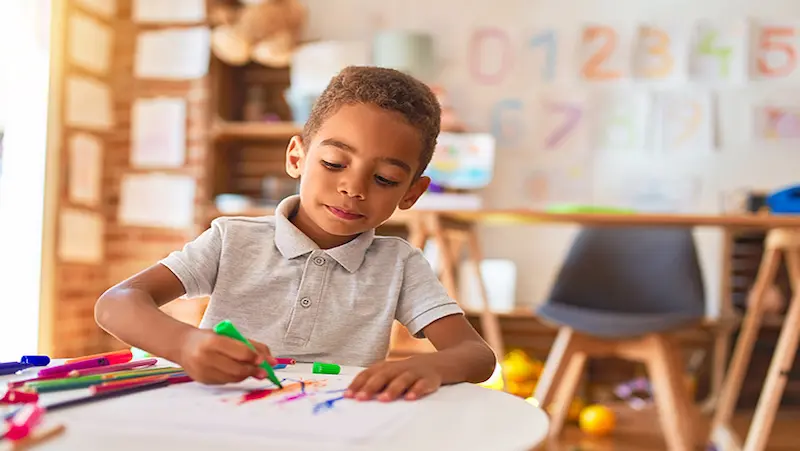
 We are an army of educators and passionate learners from BrightChamps family, committed to providing free learning resources to kids, parents & students.
We are an army of educators and passionate learners from BrightChamps family, committed to providing free learning resources to kids, parents & students.







